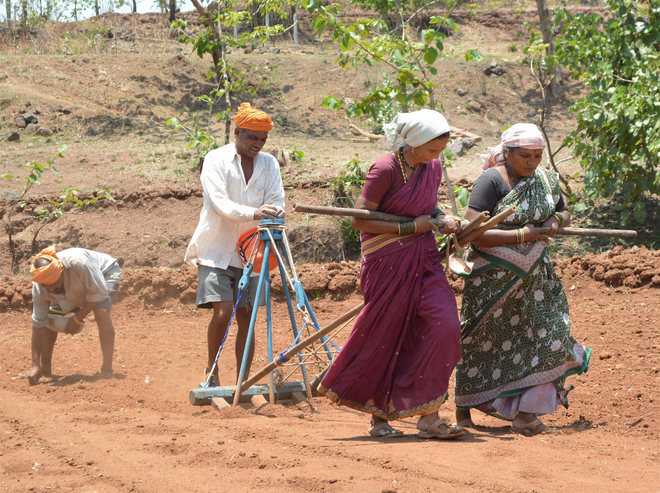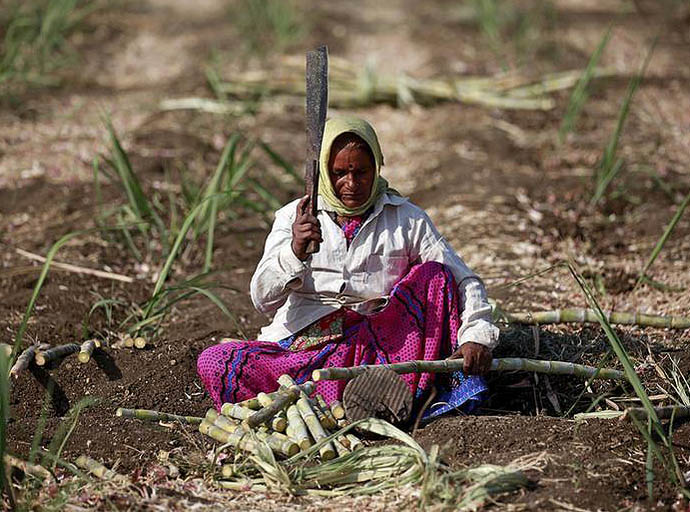The plight of farm widows remains underreported due to lack of data, dearth of special focus on the gendered dimension of agrarian distress, policy paralysis and apathy of government. Women from suicide affected agricultural households suffer on multiple levels due to the burden of overwhelming debts, absence of skills and education, lack of access to social safety schemes and the general invisibility of women to the state, community and family. The Indian state, most affected by this dark and disturbing trend, is Maharashtra. Paradoxically, however, BJP’s electoral campaign for the recent Maharashtra Assembly Elections did not cover the agrarian crisis.
The Fatal Impact Of Debts
The decade long agrarian crisis in Maharashtra has resulted in an unprecedented number of female farmers committing suicide. According to government data accessed by Al Jazeera, 22 women farmers have committed suicide in the Amravati district alone since 2018. However, the fact that the Indian government is withholding data on this issue, shows that the crisis is much worse than what these numbers indicate.
According to the authorities, no gender segregated data is available for the 35 other districts of Maharashtra. The piling of huge debts due to unpredictable weather conditions,increasing farmer costs and low wages for farm produce is leading many women in Amravati to take their lives.
According to a 2018 study by the National Bank for Agriculture and Rural Development, 52.5 percent of all the agricultural households were indebted with an average debt of $1,470.Banking rules do not permit farmers who have running loans to borrow more credit. Hence, indebted families in need of credit often push female farmers to take loans, pushing them deeper into the vicious debt cycle that is presently very common in Maharashtra.
The local head of government, the collector of Amravati, Shailesh Nawal, said to Al Jazeera that microfinance institutions have contributed to rising farmers’ debts in the region. He says, “Since microfinance loans are easily available, these loans are spent on non-productive usage, like domestic expenses or repayment of other loans. As a result, they don’t lead to income-generation and hence, don’t help in the long run.” Seema Kulkarni, the national facilitation member of Forum for Women Farmers’ Rights, agrees, “Microfinance institutions have been aggressively targeting women in the most vulnerable regions of the state and often encourage women to make multiple borrowings. What makes women even more vulnerable is that they have very little state support on healthcare, food security and pension.“
Aarti Bais, of Swarajya Mitra, a grassroots organisation that works with widowed and unmarried women in Maharashtra, says that how the loan is structured can be very troublesome for many female farmers.
Women in the self-help groups act as guarantors for loans given out by microcredit organisations. So, when borrowers start defaulting on loans, companies ask these women to pay up instead.
“These guarantors are also women from the same village. So, this acts as a pressure tactic on defaulters… There are villages where every woman has loans against her name. The borrowing is pushing women deeper into the debt trap in a way that we might soon see more women killing themselves in the future than men”, said Bais to Al Jazeera.

Lack Of Access To Social Sector Schemes
The demands of many women who were there at Azad Maidan for a rally organised by the Mahila Kisaan Adhikaar Manch (MAKAAM) were a rise in the compensation amount of Rs 1 lakh ex gratia given by the state government, increase in pension and an independent ration card for widows. Farm widows from the Vidarbha and Marathwada regions of Maharashtra participated in the rally. The women present at the rally were distressed as they had either been denied the compensation or had received a partial amount. The government says that the women who haven’t received the compensation amount of Rs 1 lakh ex gratia, don’t satisfy the criteria which have been put down by the government.
According to the criteria, farmers who have committed suicide must have land in their name, loans from an institution and crop failure, for their families to be eligible for compensation. Many of the widows don’t get their pension because their farmland wasn’t registered in their husband’s name.
At a closer look, the demands show how Maharashtra, despite being the state with the highest GDP in India—which according to figures is around Rs 28 lakh crores—doesn’t bring about a corresponding increase in its expenditure on social sector schemes. According to Down To Earth, only 48% of the allocated funds for social sector schemes are actually spent, while only 11% of the GDP is taxed. Tax-GDP ratio needs to be increased to around 20-25%, which can be achieved by levying a higher tax on goods like alcohol. This needs to be done, taking cognizance of the entrenched rural-urban divide.
Dismal Statistics
According to Oxfam (2013), approximately 80 per cent of farm work is done by women in India. However,only 13 per cent of the land is owned by women. Recent statistics released by the University of Maryland and the National Council of Applied Economic Research (NCAER, 2018) show that women comprise of over 42 per cent of the agricultural labour force in India, but have less than two per cent of farmland property.
According to the India Human Development Survey (IHDS, 2018), 83 per cent of agricultural land in the country is inherited by male members of the family and less than two per cent by their female counterparts.
In Maharashtra alone, according to reported statistics (BBC, 2014), there are more than 53,000 farm widows. Out of these, around 10,600 live in Vidarbha, the farmer suicide capital of the country.
Recently, a survey conducted by the Mahila Kisan Adhikar Manch (MAKAAM, 2018) of 505 women farmers (whose husbands committed suicide due to farm crisis) in 11 districts across Marathwada and Vidarbha states that 40 per cent of women widowed by farmer suicides between 2012 and 2018, were yet to obtain rights of the farmland they worked on. Among them, only 35 per cent had safeguarded the rights to their family house.
The survey also found that 33 per cent women didn’t know they were entitled to a pension, which makes it clear how women have been excluded from accessing institutional rights and entitlements, in the absence of them being recognised as farmers.

Also read: Why Is Nobody Listening To The Widowed Farmers Of Maharashtra?
Invisibility of Farm Widows
A widow encounters seven invisibilities imposed on her as she navigates through the various problems after the farmer’s suicide. This is part of the findings of research by Kota Neelima in Marathwada and Vidarbha regions of Maharashtra, which have cases of over 69,000 farmer suicides since 1997 (NCRB & Lok Sabha). Kota Neelima writes in the Hindustan Times, “The first invisibility is tradition, which operationalises fears and insecurities of the widow, so that the control over her life shifts from her husband to that of the family and the society. The second invisibility is status, where a woman’s position in the society and before the state is uncertain without male approval.”
Neelima further adds that the third invisibility is procedure, which is not inclusive of gender. The fourth invisibility is opportunity, like education, which is denied to the widows from their childhood, as evident from drop-out rates for girls in higher classes. The fifth invisibility is value, which naturalizes a woman’s work as duty. The sixth invisibility is ownership because, despite laws, women do not inherit property traditionally. The seventh invisibility is the vote.
According to an Economic and Political Weekly report, “Since widows have never had any experience in crop planning, cultivation, and harvesting, the authors write that they would rather sell their land and work as paid labour on other farms to make ends meet. They were unable to find alternate means of livelihood as they possessed no other skills.” The report also says that moreover, they had limited hours available in the day for working as labourers given their household responsibilities of child-rearing and caring for older family members. Further, even if the state provides financial assistance, a lack of basic education in managing finances means many women are unaware of how to plan their expenses.
Conclusion
Farm Loan Waviers, which is used by political parties to lure the agricultural class is a short term and ineffective solution.Some of the welfare policies that the government can adopt and implement are :
- composite insurance scheme for farmers against crop failure and vicissitudes of market
- mass irrigation program through inter-linking of rivers
- diversification of agriculture
- revamping the value chain of agricultural products so that the farmers can directly be integrated with the ultimate consumers.
Also read: Unravelling The Increasing Cases Of Hysterectomy In Beed District Of Maharashtra
Featured Image Source: P. Sainath




